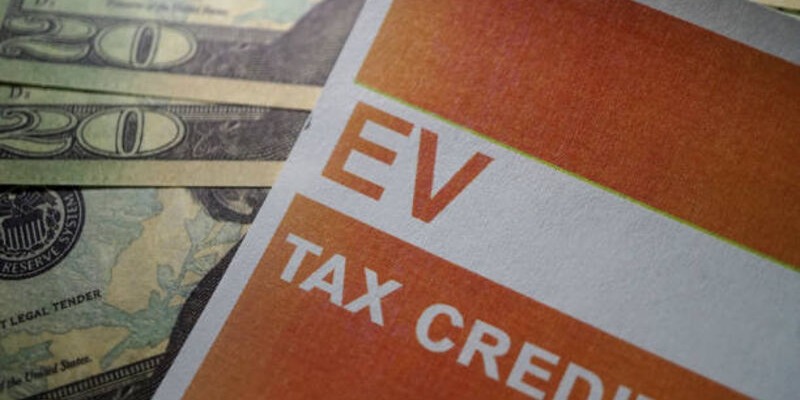What is Adverse Selection in Car Insurance and How Does It Work?
May 18, 2024 By Triston Martin
Most US states require all drivers to have auto insurance to avoid "adverse selection," when the riskiest consumers drive out the safest. Economic arguments support these forced purchases, but real-life instances illustrate that theory and practice differ. If pricing cannot adapt to risk, the most expensive civil car insurance customers raise average premiums, making it uneconomical for the least risky to acquire. Insurance firms compensate by charging high-risk consumers more.
Adverse selection can be shown by two potential life insurance customers who desire to buy from Company ABC. The first person has diabetes and does not exercise, while the second is healthy and exercises several times a week.
People with diabetes have a shorter lifespan than healthy people, and not exercising increases the risk. With health information, the Honda car insurance company will regard the two potential policyholders as normal. Likewise, insurance companies ask new policyholders to complete registration documents during onboarding. Potential clients must be honest and disclose all necessary information, including health issues. As he knows that reporting his illness will result in expensive rates, the person with diabetes may lie to get the same treatment as the healthy client. Keeping crucial information hidden causes adverse selection. The high-rated auto company insurance will lose out if it contracts with a diabetic patient without knowing their health.
Buyer-Seller Adverse Selection
When a buyer wants to buy civil car insurance from a seller, but the seller knows more about the product, adverse selection may occur. Customers are disadvantaged because they agree with a vendor who may not reveal all product facts. If a vendor sells a used car with hidden flaws, the buyer will be disadvantaged unless the seller discloses them. The buyer buys the car without the seller exposing its problems, which is an adverse selection.
Capital Market Adverse Selection
Some securities are particularly susceptible to adverse selection in capital markets. For example, a high-growth corporation may offer investors expensive equity. Suppose capital market managers have inside information about the company that outside investors don't know. Adverse selection occurs. Managers may know that the company's bid price surpasses its internal valuation. Investors will unknowingly buy overvalued shares, which will hurt them. Adverse selection will end if managers advise investors of the company's overvaluation and investors acquire the stock.
Adverse Selection and Auto Insurance

Adverse selection in auto insurance happens when high-risk drivers buy more insurance, forcing insurers to pay more expensive claims. To reduce this, all drivers must have auto insurance. The mandate targets high-risk drivers to ensure they pay for insurance rather than low-risk drivers who may opt out.
Actuaries and screening technologies have improved risk assessment, helping insurers identify safe and dangerous drivers. High-rated auto company insurers need to cover high-risk drivers with losses. States and DC offer "residual market" vehicle insurance to address this. These schemes subsidize high-risk drivers who cannot get insurance elsewhere. States offer residual market plans to balance the insurance pool and cover high-risk drivers. Preventing adverse selection from disrupting the auto insurance market improves driver financial security.
Adverse Selection and Other Options
Individuals vary in risk tolerance, knowledge, and risk protection, so insurance firms may need to learn more about them. Another way to prevent adverse selection if differential pricing is neither legal nor viable is to prevent low-risk clients from leaving the market. This means requiring everyone to buy civil car insurance to prevent insurance businesses from failing due to high-risk payouts. In effect, low-risk must subsidize high-risk.
Affordable Care Act of 2010
Under the Affordable Care Act of 2010, nonexempt US adults had to buy health insurance. This is the "individual mandate." It was created to prevent adverse selection from taking over the health insurance market after the ACA.
Insurance providers and low-risk clients suffer economically from two ACA provisions complicating actuarial work. High-rated auto company firms must offer all applicants "essential health benefits," a minimum coverage level. Second, community-rating insurance premiums prohibit screening based on several health factors, such as gender or medical history. Instead, geography and age determine premiums.
The ACA allowed all employers with more than 50 employees to obtain insurance and imposed an individual mandate to address these issues. Insurance companies receive subsidies for high-risk users since risk screening is possible but illegal. Adverse selection is caused by necessary health benefits and potentially remedied by the individual mandate.
How Private Insurers Prevent Adverse Selection

Adverse selection involves knowledge, probabilities, and risk. Differential pricing usually solves it. Two people apply for Allstate vehicle insurance. The first applicant is a 22-year-old antique guy who travels to paintings daily, has a dashing report, and has had injuries. The second applicant, a 40--12 months-old mom who rides public transit to work, has no longer been ticketed or had an accident in over a decade.
Moreover, Honda car insurance considers the first applicant riskier and more expensive, with mild danger for the second application. Allstate uses actuarial statistics and probing inquiries during the application process to determine riskiness. 20-something men are the most costly to insure. Thus, Allstate can charge the first applicant a greater premium to offset the risk.
The Solution to Adverse Selection
Insurance organizations can avoid adverse choices by grouping a high-rated auto company and basing premiums on age, health, weight, medical history, obesity, diabetes, hobbies, smoking, and employment.
The preceding elements affect fitness and life expectancy and can affect the company's claim payout. The corporation should insure a potential client and compute the premium during underwriting.
Bottom Line
Adverse selection works similarly in auto and health insurance, but the reality differs. Civil auto insurance dynamics differ. Insurance companies can better assess driving behavior and risk using driving history, vehicle type, and location. This lets them alter premiums, reducing adverse selection. Auto insurance is necessary for legal driving; most prioritize it over cost. The legal necessity to obtain auto insurance helps maintain a more balanced risk pool than health insurance, where many circumstances might impact coverage decisions.

What is Communism? Learn its History and Principles

Top Insurance for Restaurants - Best Offerings To Choose From

Understanding OTCQX: A Closer Look at Its Listing Requirements

A Detailed 2024 Review of the Oxford Club

Decoding the Mystery: Anti-Money Laundering Unveiled

A Comparative Analysis of TipRanks vs Simply Wall St

Which One is the Best Financial App: Banktivity vs Quicken

A Comprehensive Guide: Claiming Your Electric Vehicle Tax Credit

Understanding The Automated Clearing House (ACH) in The Modern Banking

